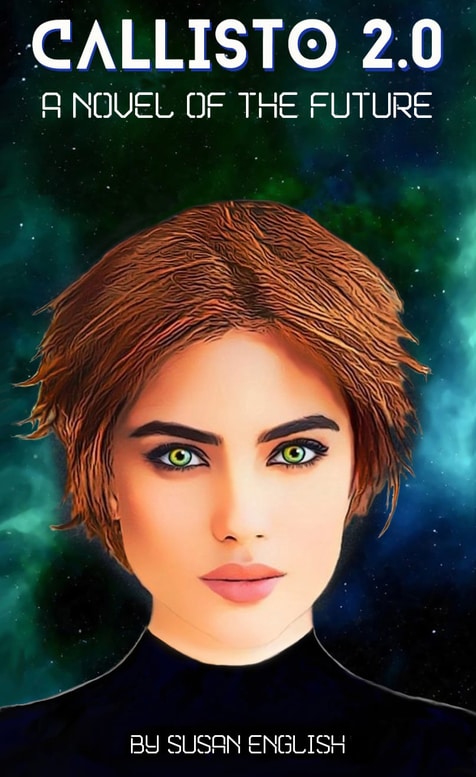
A gifted young researcher finds her life rocketing in a new direction – to the stars – in Callisto 2.0 by Susan English, a creative, time-warping thrill.
This foundation-building novel is a strong start for a new feministic science fiction series, landing as both timely and relatable. After an astonishing sequence of unlikely events, Callisto finds herself orbiting the moon, in awe of her out-of-this-world boss, and working on the greatest unsolved problems of human space travel. However, despite being surrounded by an entire space station of brilliant and unique women from across the globe, there are dangerous secrets lurking beneath her dream job.
The slow-burn storytelling is what makes Callisto 2.0 such a compelling adventure. English isn’t afraid to dangle mysteries before the reader, luring them deeper into a powerful narrative that is difficult to resist. From the very first chapter, she patiently builds tension with hints and clues and foreshadowing, hinting constantly that something is amiss, or that some major truth is being withheld.
The world-building in any near-future or sci-fi story can make or break a novel, but this author puts her creativity on prime display. Granted, there are some common tropes like holomessages, but there are many more clever bursts of imagination, like algae-based water balls, warp drive mysteries to solve, and the great die off of the mid-2000s – an ominous prophecy. Envisioning a future where today’s real-world obstacles have been overcome, after unimaginable tragedies have occurred, makes for great fiction, and an endless landscape for exploration and narrative creation. The technical jargon related to engineering and various other specialties on the ship also makes the setting immersive, but the narration gratefully doesn’t get bogged down in scientific details.
At times, the pace of the writing can be sluggish and some of the space station’s procedural scenes are redundant. Capturing the essence of enclosed life on a ship is interesting, but the plot should have a clear trajectory forward, even during character-building passages. There are only so many crew members that the protagonist can meet before such exposition becomes a bit dull, particularly if these conversations and scenes don’t lead to something greater. That said, Calli’s burgeoning relationships – both platonic and intimate – are a major plot driver, and the female-dominated storyline tends toward introspection and connection, rather than constant battle sequences and a vision of the future seen solely through a militaristic lens, which is wholly refreshing. Still, the conflict is slow to fully appear, which adds to the meandering feel in the first half of the book.
On the technical side of the novel, there is a sterility to much of the language; it is clean and precise and informative, but often lacks descriptive flair or emotion. Even the more intimate scenes have a matter-of-fact quality that can feel inauthentic, or unreal. The dialogue often fails to capture the flow and repartee of organic conversation, and the absence of colloquial or nuanced speech, despite many different character origins, can make some exchanges flat or hard to believe.
As a whole, Callisto 2.0 is an addictive read built on an incredible idea, and with some improved execution and a keen editorial eye, the rest of the series promises to be even better.
Book Links
STAR RATING
Design
Content
Editing
Get an Editorial Review | Get Amazon Sales & Reviews | Get Edited | Get Beta Readers | Enter the SPR Book Awards | Other Marketing Services























Leave A Comment